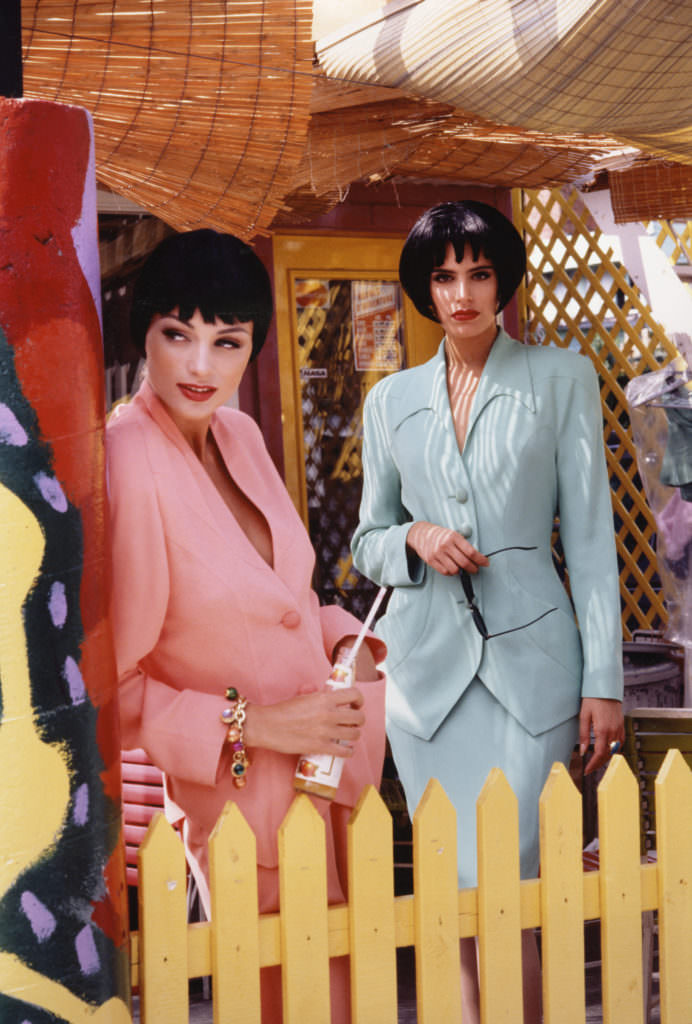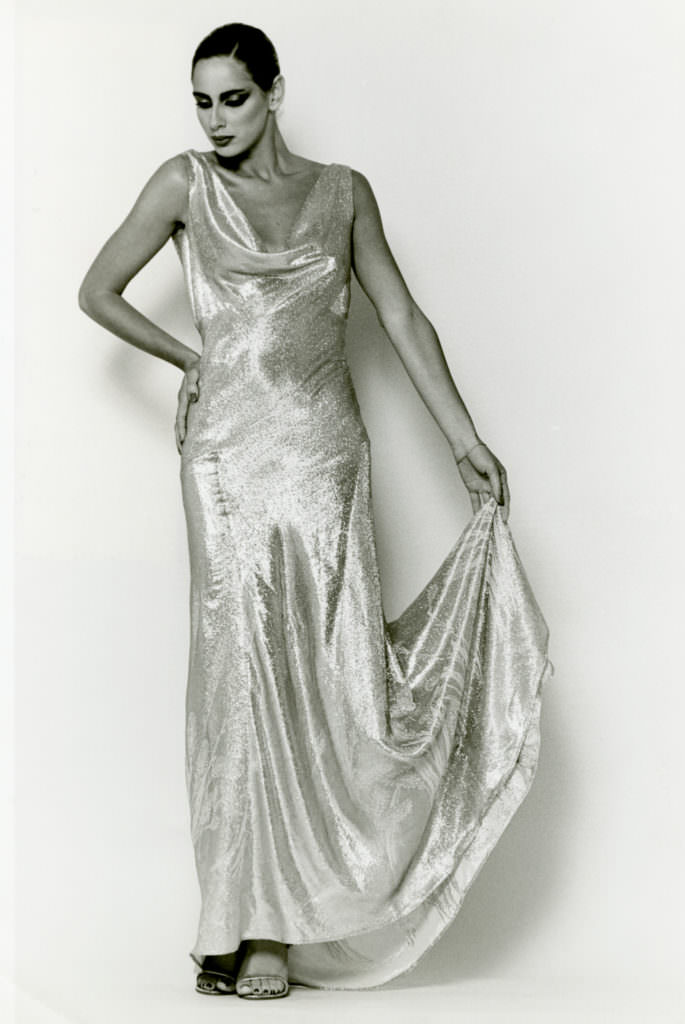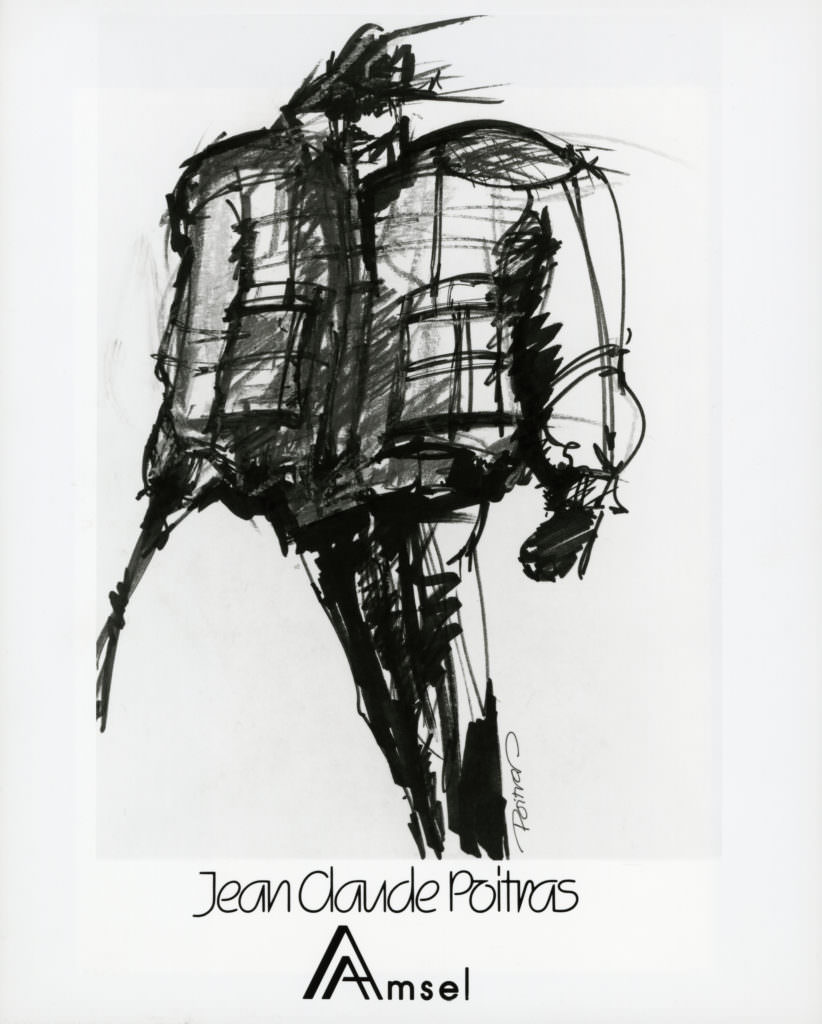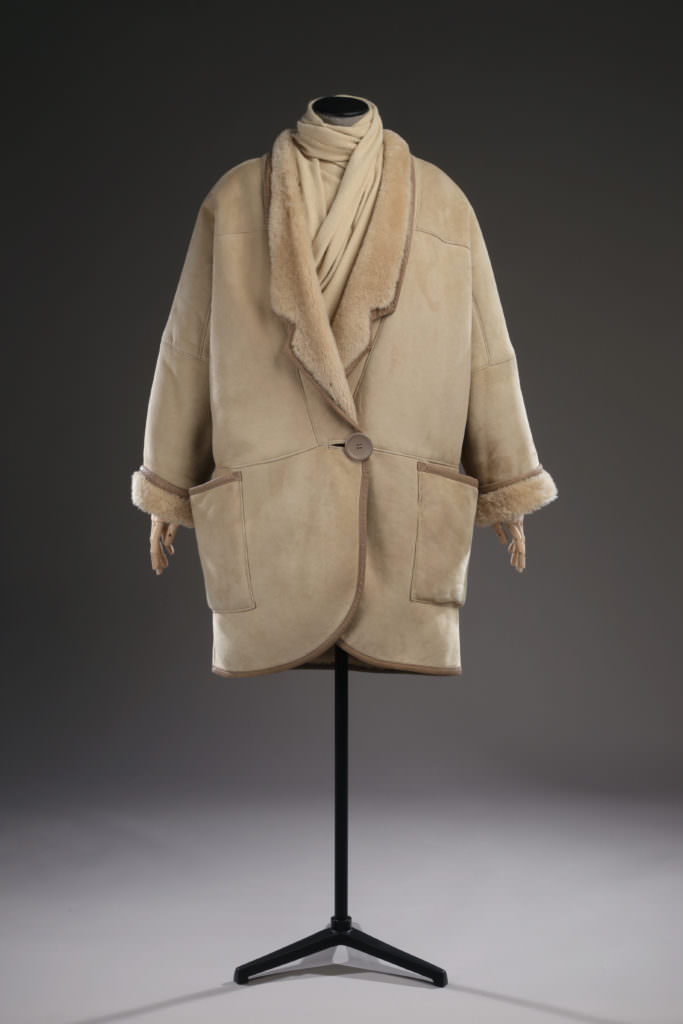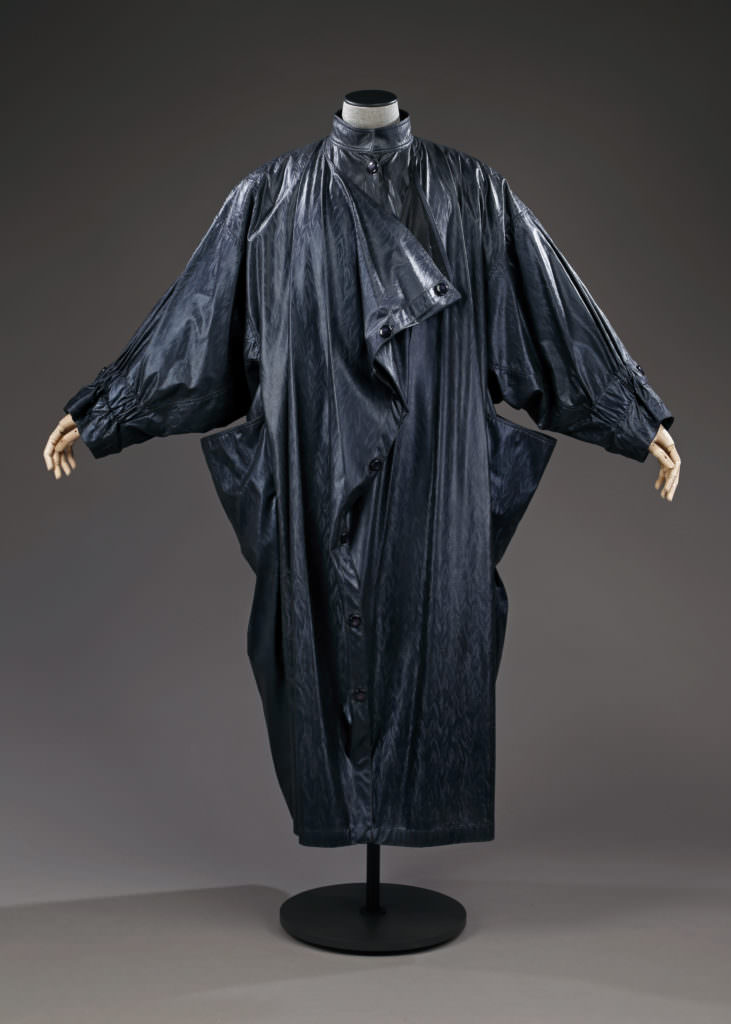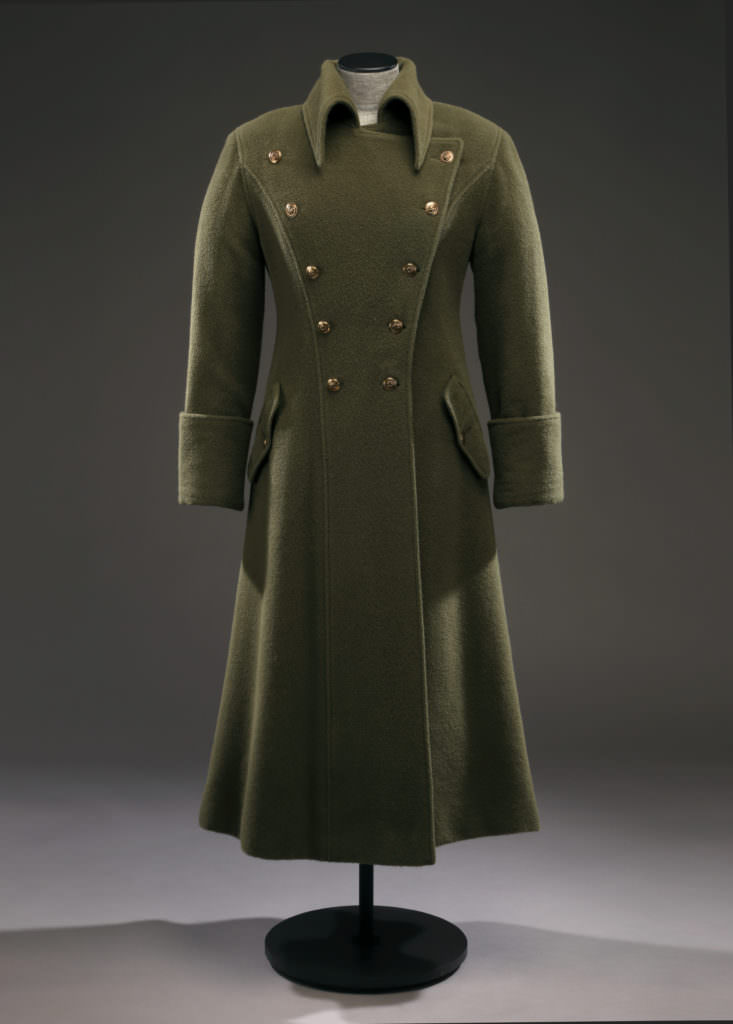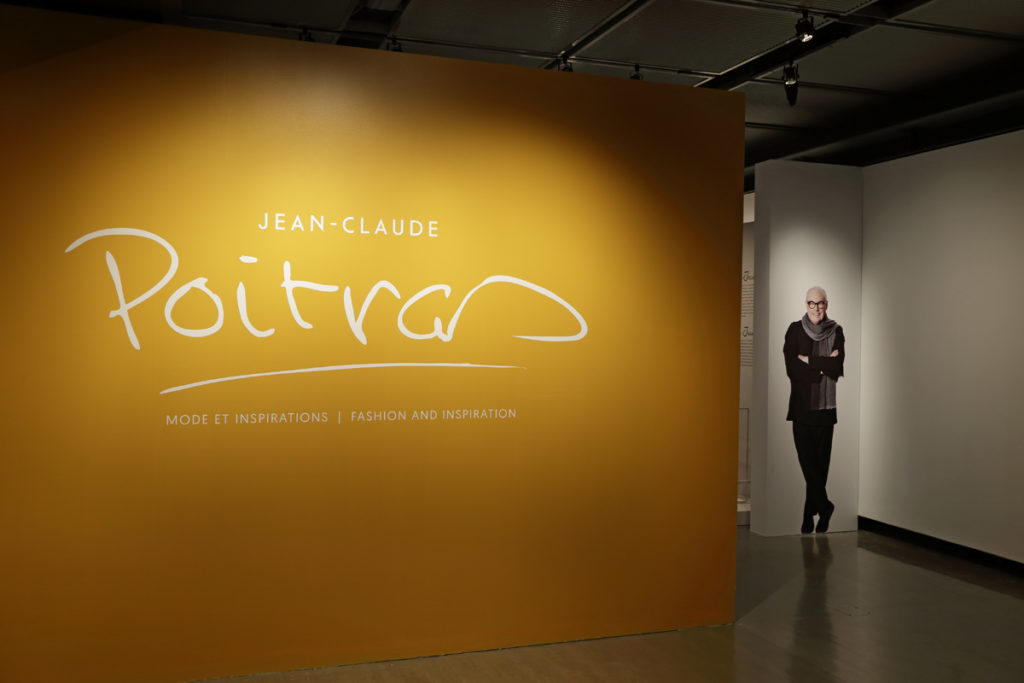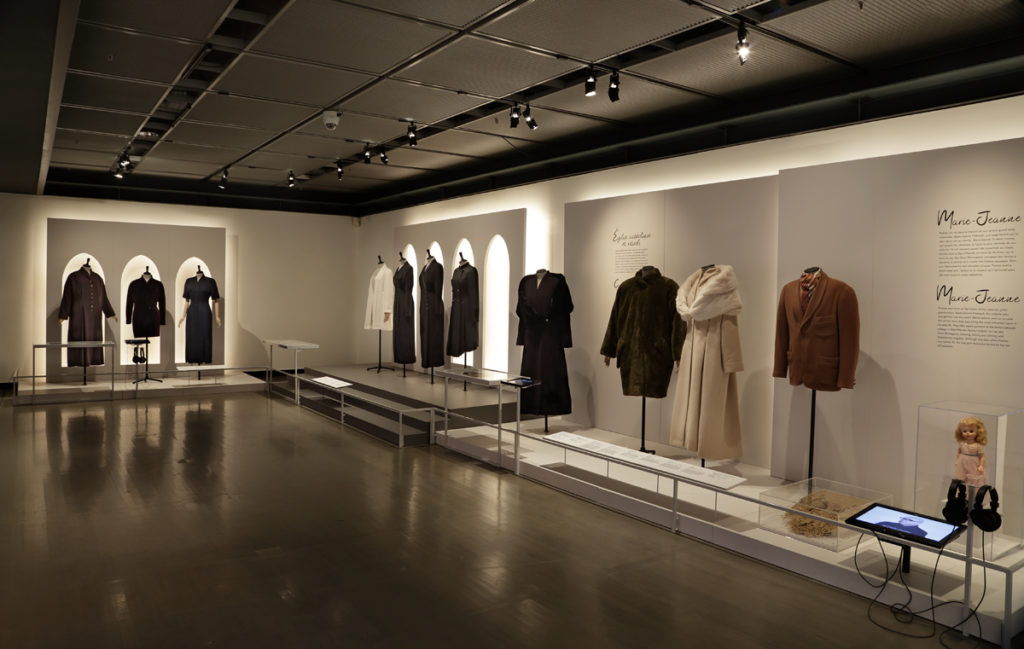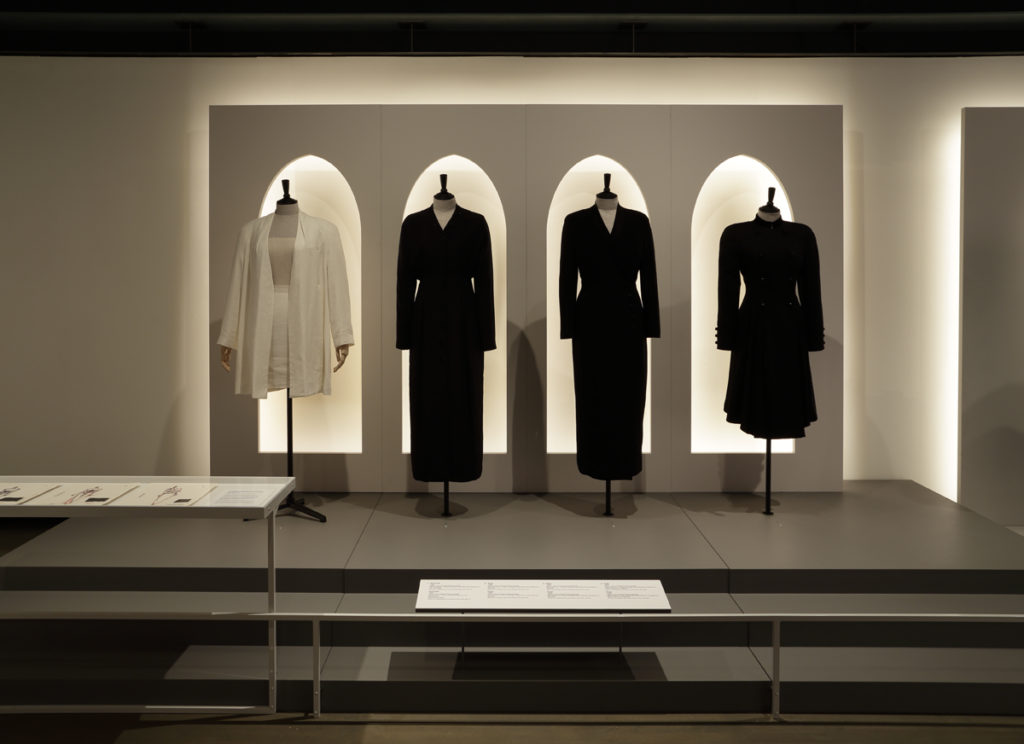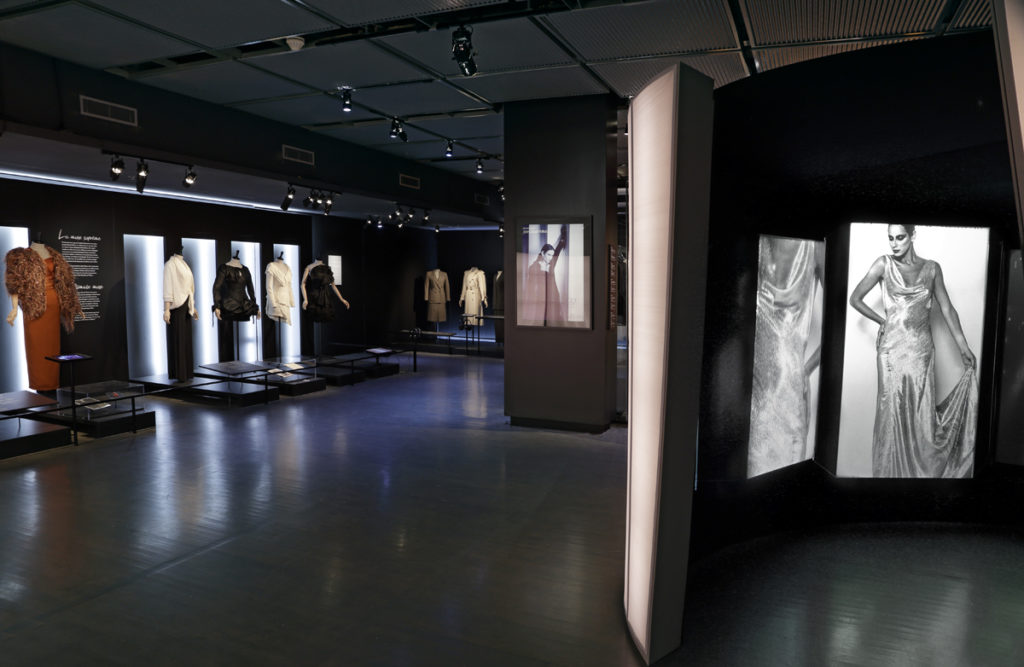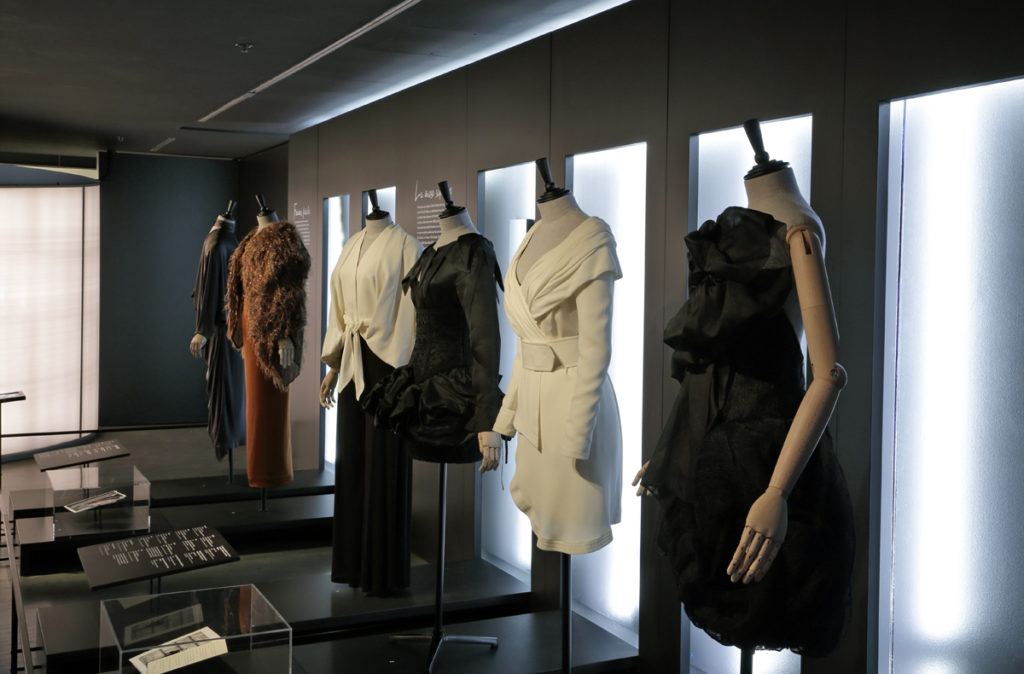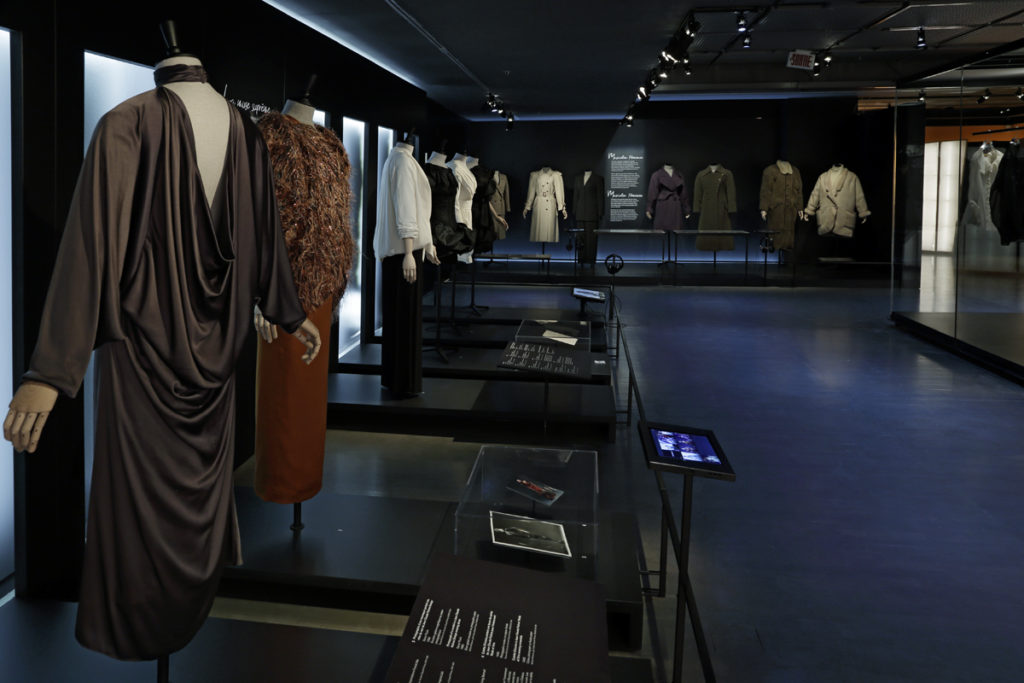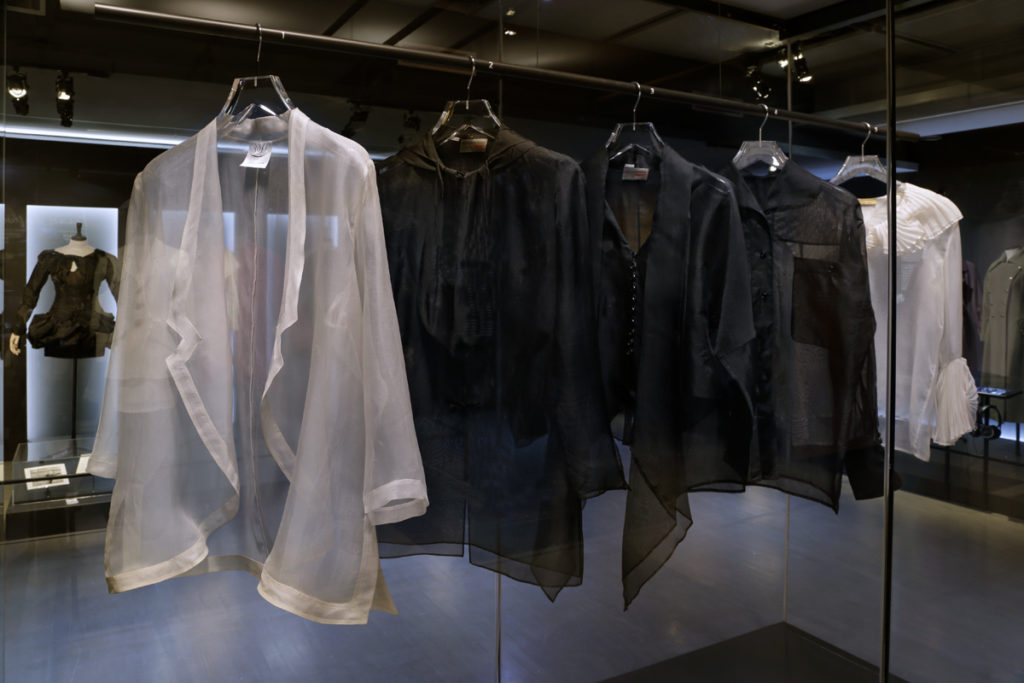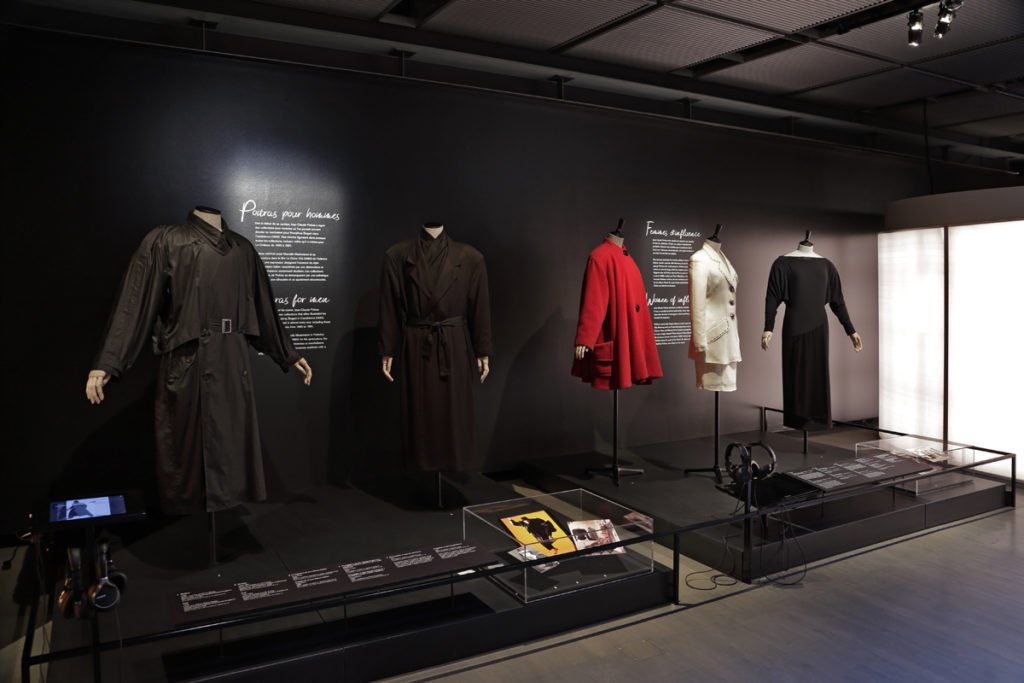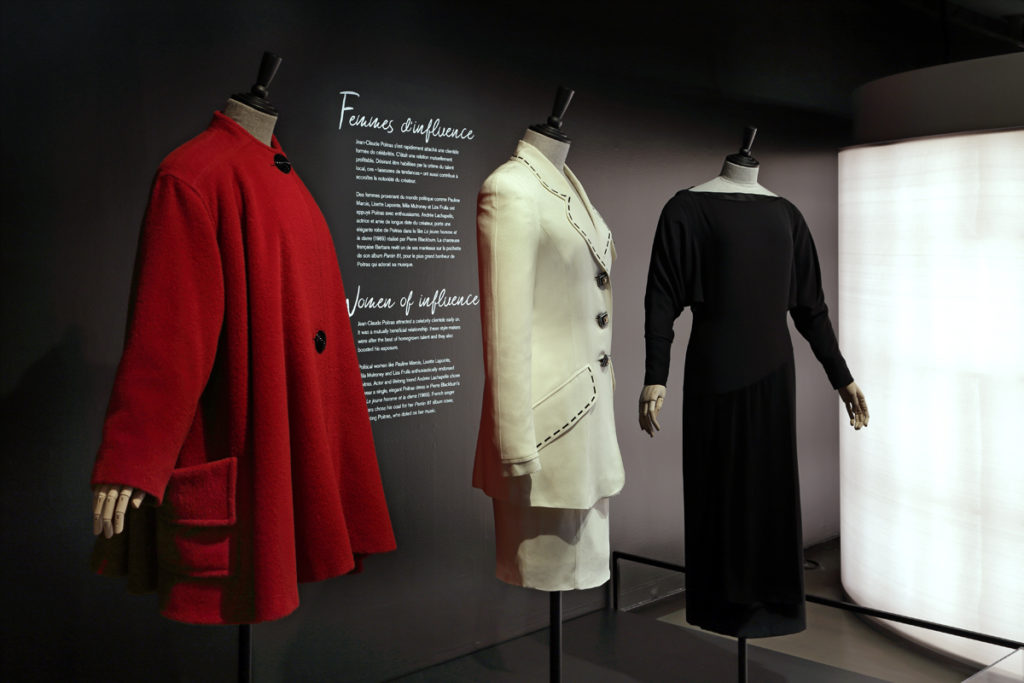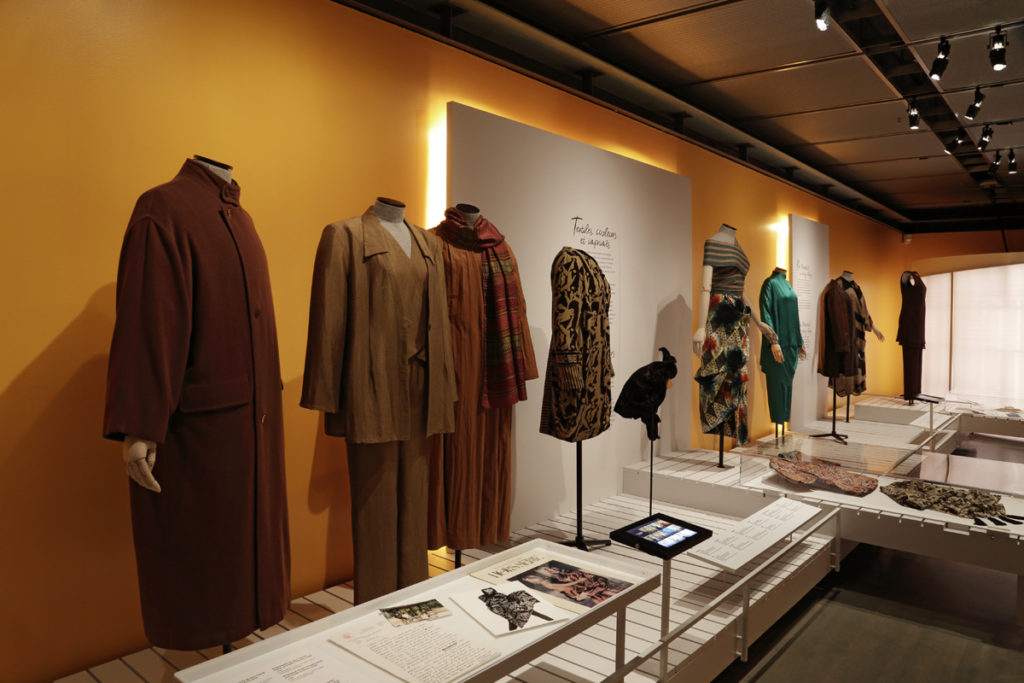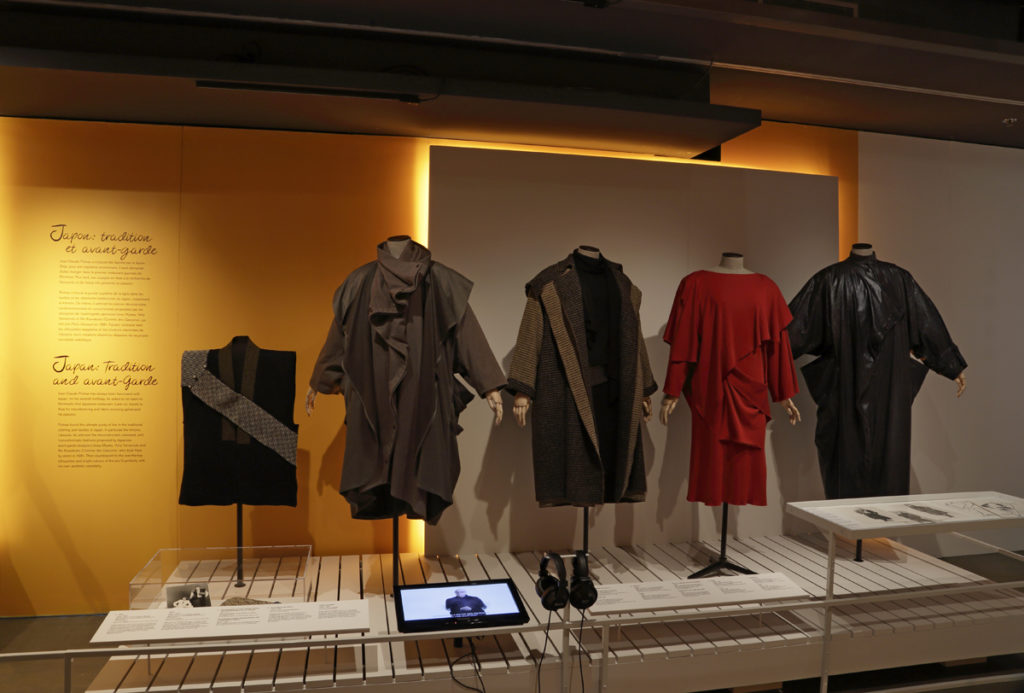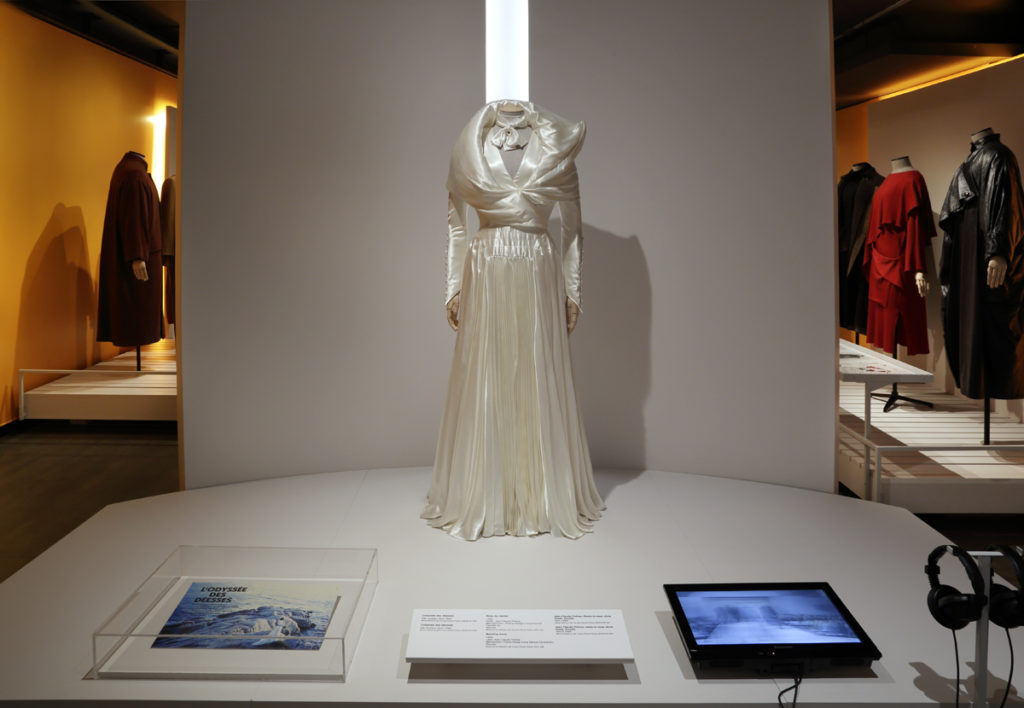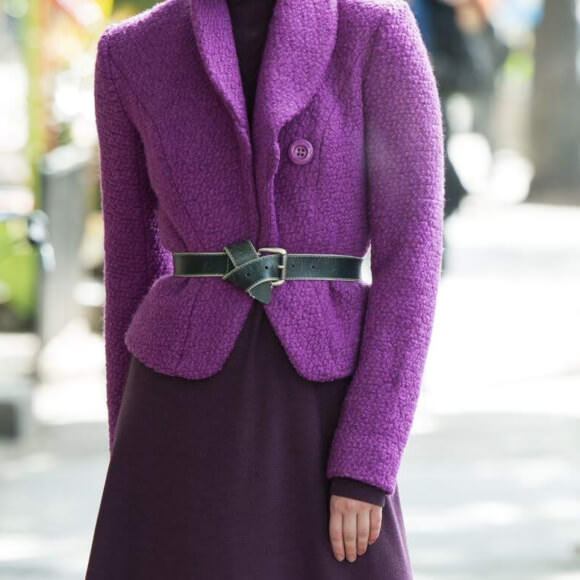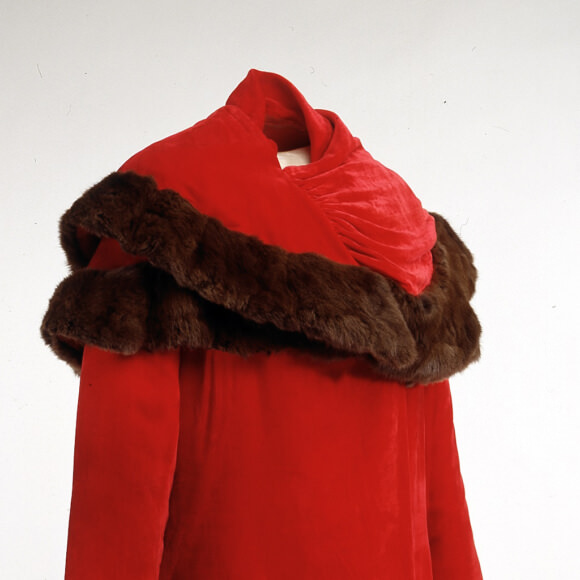
Jean-Claude Poitras, 2019. © Alexis K. Laflamme
Jean-Claude Poitras is one of Quebec’s most respected and celebrated fashion designers of recent decades. His curiosity, resilience and rapport with the press and public have marked his career of more than thirty years working in Montreal’s high-end ready-to-wear fashion industry. Poitras has weathered successes and failures in business, seen enormous changes to the industry and production methods, and still managed to stay passionate and enthusiastic about designing clothing.
Born in Montreal’s Cartierville neighborhood in 1949, Poitras was interested in fashion from a young age. He earned a diploma in Fashion Design from the École des métiers commerciaux in 1969, and a diploma in Graphic Design from Studio Salette in 1971.
In 1972, with a $400 loan from his father, Poitras opened his first atelier, Parenthèse, in Montreal’s Old Port.
He designed men’s and women’s fashions and accessories, which were sold to private clients and at the Lily Simon boutique. To help support his fledgling fashion business, in 1972 Poitras took a part-time job as a salesperson at Eaton’s Adam Boutique, the department store’s high-end European menswear shop. Later that year, he closed Parenthèse to work full-time at Eaton’s.
Poitras quickly rose through the ranks at Eaton’s, becoming the buyer, then the director of the Adam Boutique, and eventually the director of the high-end women’s Ensemble Shop.
It was through Eaton’s that he first travelled to France and Italy and discovered a love of travel that would inspire his creative practice throughout his career. For spring-summer 1993, for example, Poitras designed a womenswear collection titled La Dolce Vita, which contained garments inspired by his favourite places in Italy.
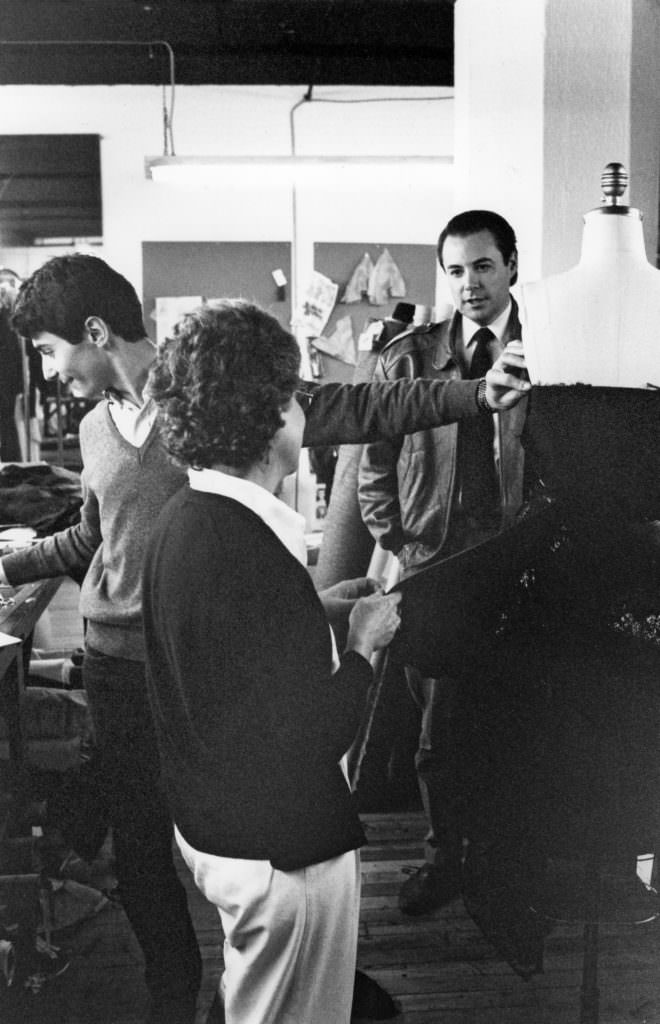
Unknown photographer, Jean-Claude Poitras at Beverini, 1981. Gift of Jean-Claude Poitras, M2005.78.1125, McCord Stewart Museum
In 1976, Poitras accepted a position at Beverini Inc., the Montreal-based manufacturer founded by Auckie Sanft and run by his son Arthur Sanft. Poitras originally worked as a salesperson for an imported French brand, Peroche. He was promoted in 1977 to designer of his own womenswear collection, a line called BOF, which was very successful across Canada. Menswear was added in 1978, and a BOF boutique was opened on St. Paul Street West in 1979. Poitras finally left the company in 1983 to pursue other projects, and the boutique closed soon thereafter.
In 1977, just after Poitras started at Beverini, he also founded his own company: Les modes Jean-Claude Poitras Inc. The new company enabled Poitras to license his name for collaborations with garment, accessory, fur and uniform manufacturers. In 1983, he renamed his company Nota Bene Design Inc. and, with the backing of private investors, opened his Jean-Claude Poitras Boutique in Rockland Centre. The designer envisioned creating special men’s and women’s collections for the store, but it closed by the end of the same year.
From 1983 to 1988, Poitras worked for Franck Imports Ltd., a Montreal-based manufacturer and importer of womenswear, founded in 1977 by husband and wife team Annie and Armand Coriat. Poitras signed licensing agreements with the Coriats to manufacture his women’s collections, and he designed for the company’s Ronsard Sport brand.
With Franck, Poitras travelled to Hong Kong twice yearly to source fabrics and oversee production of his collections. This connection with Chinese manufacturers led Poitras to start working with silk fabrics. His asymmetrical, often layered designs during this period were heavily influenced by the Japanese avant-garde fashion that had taken the world by storm in the early 1980s.
JEAN-CLAUDE POITRAS: Fashion and Inspiration - Japan

Jean-Claude Poitras, interview conducted for Jean-Claude Poitras: Fashion and Inspiration, April 2019, McCord Stewart Museum
From the mid 1980s to the early 1990s, Poitras’ Nota Bene Design signed licensing agreements for the designer to produce namesake collections for Montreal furrier Amsel & Amsel and sheepskin coat manufacturers International Trademarks Apparel and Sawyer of Napa.
In 1987, Jean-Claude Poitras, with business partner Jacques Pelland, founded a new company, Poitras Design Inc. At first, due to limitations imposed by licensing agreements with Franck Imports Ltd., the company produced menswear only. Womenswear collections were added in 1988.
Poitras briefly worked for Le Château as a design consultant in 1988. In 1990, he was approached to design a capsule menswear collection for the brand consisting of suits, coats, shirts, pants, shoes and accessories. Poitras welcomed the collaboration as a way to make his designs more accessible and reach a younger clientele. The licensing agreement lasted until 1991 and, at the time, was the designer’s most lucrative contract of his career.
In 1990, partnering with the Fonds de solidarité des travailleurs du Québec, Poitras Design Inc. merged with Irving Samuel Canada Inc., the leading high-quality coat and suit manufacturer. Jean-Claude Poitras became executive vice-president of the company and head of design and production for his collections, which were separate from the Irving Samuel brand. He designed his exclusive namesake label and, in spring 1994, relaunched the women’s Bof! brand as more of a mid-range line. Irving Samuel-Poitras Design closed its doors in 1995 after failing to reach cost-cutting agreements with the International Ladies Garment Workers Union. Jean-Claude Poitras was able to retain the rights to his name as the company declared bankruptcy.
Soon after the Irving Samuel-Poitras Design closure, Arthur Sanft offered the designer a new partnership in his company, Fashion Société Design Inc. The company manufactured two womenswear collections for Poitras: Qui m’aime me suive was a line of dresses and eveningwear, while Bof! continued to be produced as an affordable line for wide distribution. By mid-1998, Fashion Société Design had run into financial difficulties and Arthur Sanft decided to leave the company. Although it was purchased by the Caisse de dépôt et placement du Québec, which continued to work with Poitras, it ultimately ceased all operations by the end of the same year.
In 1999, Poitras became associated with Montréal Mode, a subsidiary of the Caisse de dépôt et placement du Québec created to promote Québec’s fashion industry internationally. By investing $30 million in local companies, Montréal Mode aimed to provide select designers with production, distribution and marketing support. Poitras sold his name and part of his company to the organization. In 2000, Poitras left Montréal Mode amidst a series of widely publicized internal financial scandals; he was eventually able to regain control of his name. Montréal Mode ceased all activities in 2001.
Poitras designed his final ready-to-wear collection for fall-winter 2002-2003—a line of women’s coats for Me-Jay International Inc. He has continued to design custom garments for private clients and special projects.
In 2015, he collaborated with embroiderer Jeanne Bellavance and bespoke tailoring studio Sartorialto to create the ensemble worn by Haitian-Canadian journalist and writer Dany Laferrière for his induction into the Académie française.
Poitras’ style often made use of ample cuts; he appreciated the sensuality in garments that covered most of the body. He preferred an architectural and severe silhouette.
His women’s fashions were often influenced by menswear, taking inspiration from the masculine chic of film stars Marlene Dietrich and Katherine Hepburn. Coats and outerwear were the most commercially successful garments for Poitras throughout his career; their high quality and stylishness were admired by the press and the public.
In addition to his fashion work, Poitras designed numerous uniforms throughout his lengthy career. His first was created for Radio-Canada’s announcers during the Montreal 1976 Summer Olympic Games. Others were for White Cross, Air Canada, the Canada Border Service Agency, Canada Post, Hydro Québec, the Montreal Museum of Fine Arts, and the Société de transport de Montréal (STM), among others.
Always influenced by the cinema, Poitras also designed film and theatre costumes throughout the 1980s. Andrée Lachapelle, a long-time friend of the designer, wore a Poitras dress in Pierre Blackburn’s 1989 film Le jeune homme et la dame.
Poitras has received numerous awards and distinctions including the Maison du Lin’s Fil d’Or in Monte Carlo in 1989. Past recipients include Karl Lagerfeld and Gianni Versace—Poitras was the first Canadian to receive the prestigious award. He was named to the Order of Canada in 1995. In 1996, he was named a Knight of the Ordre national du Québec and promoted to Officer in 2012. He won both best women’s and men’s wear designer in 1991 at the first edition of the Griffe d’Or; he was also awarded the Griffe d’Or for lifetime achievement in 2000.
As of 2019, Jean-Claude Poitras was still pursuing multi-disciplinary design, art-making, teaching, writing, lecturing and philanthropic activities. He enjoys being remembered for his fashion design career the way one of his clients once characterized him: “the man who made nice clothes.” He recently published a memoir, Quand la vie défile. His archives and garments are held by the McCord Stewart Museum and the Musée de la civilisation.
On May 17, 2019, he was made a Knight of the Order of Montreal and, in the fall of 2019, he was the first designer to receive the Ernest-Cormier Prize, one of the eight Prix du Québec in the field of cultural achievement.
The exhibition Jean-Claude Poitras: Fashion and Inspiration was held at the Musée de la civilisation in Quebec City from June 20 to September 15, 2019 and at the McCord Museum in Montreal from October 24, 2019, to August 2, 2020.
Sources
Jean-Claude Poitras, Quand la vie défile. Montréal : Les éditions de l’homme, 2018.
Anne Richer, Jean-Claude Poitras : Portrait d’un homme de style. Montreal : Les éditions de l’homme, 2002.
Share
DownloadRecommended entries
© MCCORD STEWART MUSEUM 2025




